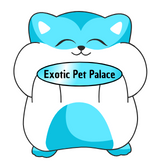Guinea pigs, with their cute squeaks and fluffy bodies, are popular small pets.
However, the thought of a continuously dirty cage might scare some potential owners.
The good news is that, while guinea pigs are less competent than cats or dogs, they can be litter box taught to some degree.
This article looks into guinea pig toilet training, its viability, strategies, and the fundamental distinctions between training tiny pets and larger ones.
Let’s start,
Also Read:
Is Oxbow Garden Select Guinea Pig food better than Oxbow Essentials?
Why Potty Train Guinea Pigs?
There are several compelling reasons to Potty train your guinea pigs:
Reduced Cage Cleaning: A designated litter box means a cleaner cage overall. Spot cleaning the litter box becomes easier and less frequent compared to cleaning the entire cage.
Reduced Odor: Urine and feces can contribute significantly to cage odor. A litter box filled with absorbent material helps control unpleasant smells.
Improved Hygiene: A clean cage reduces the risk of bacterial infections in your guinea pigs.
More Pleasant Interaction: A cleaner cage makes playtime with your guinea pigs outside the cage more enjoyable.
I hope now you understand that Why Potty Train Guinea Pigs is essential?
Before diving into training, it’s crucial to understand guinea pig instincts:
Guinea pigs are prey animals. They instinctively eliminate in secluded areas for safety.
They use their urine and droppings to mark their territory, often choosing specific spots within the cage.
Let’s start training process.
4 Steps for Potty Training Guinea Pigs
While complete Potty training might not be achievable, you can encourage your guinea pigs to use a designated litter box:
1st Step: Observation is Key:
Watch your guinea pigs for a few days to identify their preferred elimination spots in the cage.
2nd Step: Create a Designated Area:
Choose a shallow, corner litter box with high sides for privacy.
Fill it with a small amount of absorbent bedding, like recycled paper pellets or hay (not treated with chemicals).
3rd Step: Get a Litter Tray:
Choose a litter tray that fits nicely in the chosen corner. Make sure it’s comfortable for your guinea pig.
Use the same type of bedding (hay or straw) that you keep in her cage.
Place the litter box in the place which your guinea pigs naturally use for elimination.
4th Step: Set Up the Litter Tray:
Avoid cedar or corn cob bedding, as they are toxic to guinea pigs. Keep her food and water away from the litter box.
Add a little eating straw to the litter tray for comfort.
Once the litter tray is in place, watch if she uses it.
Tips for Potty Training Guinea Pigs:
Here are few tips for Potty training guinea pigs;
🐾Positive Reinforcement: When you see your guinea pig using the litter box, offer a small treat or praise them verbally.
🐾Consistency is Crucial: Clean the litter box on a regular basis, removing filthy bedding and refilling it with fresh materials.
Do not shift the litter box once it has been set.
🐾Patience is Key: Potty training takes time and consistency. Accidents are inevitable, but celebrate progress and avoid punishment.
🐾Adapting the Environment: Reduce alternative hiding places in the cage, particularly in corners. This encourages them to utilize the given litter box.
During floor time, provide a tiny, familiar litter box in the designated play space.
Neutered males and females may be easier to train as they tend to eliminate in fewer locations.
Train young guinea pigs as they are more adaptable.
Consider using a hay feeder within the litter box. Guinea pigs often eliminate while eating.
Remember, guinea pigs can’t be fully trained like cats, but with consistency and patience, you can encourage them to use a designated area for Potty. 🐹🚽
Differences Between Potty Training Small Pets and Big Pets
Big Pets
Cats and dogs have greater control over their bladders and bowels, making training easier.
Their larger size allows for designated litter boxes to be more spacious and comfortable.
Carnivorous diet leads to more concentrated waste, easier to manage in a litter box.
Their larger bladders and ability to hold waste for longer periods allows for more freedom during playtime outside the litter box
Their concentrated waste requires less frequent litter box cleaning compared to guinea pigs.
Clumping litter options are popular, allowing for easy waste removal.
Urinary tract infections (UTIs) can be a concern if they avoid the litter box due to discomfort.
Small Pets
Guinea pigs, with their smaller bodies, may struggle with high-sided litter boxes.
Choose a low-entry option for easier access.
Herbivorous diet produces voluminous, high-moisture waste, requiring more frequent cleaning of the litter box.
Their frequent elimination necessitates closer supervision during playtime to minimize accidents outside the litter box.
Their high-moisture waste necessitates more frequent cleaning to prevent odors and bacterial growth.
Clumping litter is not recommended as guinea pigs may ingest it, leading to health problems. Opt for absorbent, non-clumping materials.
Guinea pigs can develop bladder stones if they don’t eliminate frequently enough. This highlights the importance of a readily accessible litter box.
Let’s learn What if my guinea pig doesn’t use the litter tray?
What if my guinea pig doesn’t use the litter tray?
If your guinea pig doesn’t use the litter tray, don’t worry!
Here are some troubleshooting steps to encourage her to use it:
Cleanliness Matters:
Make sure that the litter pan is clean. Guinea pigs enjoy a neat environment for their company.
Remove any dirty bedding immediately and replace it with new bedding.
Reposition the Tray:
If she’s not using the current corner, try moving the litter tray to a different spot.
Observe her behavior and see if she prefers the new location.
Patience and Consistency:
Guinea pigs take time to adjust to changes. Be patient and consistent.
Encourage her by placing some of her droppings in the litter tray to signal its purpose.
Avoid Punishment:
Never scold or punish her if she doesn’t use the litter tray. Positive reinforcement works better.
Praise her when she does use it.
Remember, guinea pigs have their own personalities, and some may be more cooperative than others. Keep trying, and with time, she might get the hang of it! 🐹🚽
How can I make the litter tray more appealing?
To make the litter tray more appealing for your guinea pig, consider the following tips:
Use soft, comfortable bedding material in the litter tray. Guinea pigs enjoy hay or straw.
Make sure the bedding is clean and fresh. Place some of her droppings in the litter tray. The familiar smell will encourage her to use it.
Avoid strong-smelling cleaning products near the tray. Position the litter tray in the corner she prefers for bathroom activities.
Observe her behavior and adjust the location if needed. Praise her when she uses the litter tray.
Offer a small treat as a reward to reinforce the behavior.
How often should I change the bedding in the litter box?
For guinea pig litter boxes, it’s essential to maintain cleanliness. Here are some guidelines for changing the bedding:
Daily Spot Cleaning:
Remove any soiled bedding or droppings from the litter tray daily.
Replace the removed bedding with fresh hay or straw.
Full Change:
Completely change the bedding in the litter box once a week.
Wash the tray thoroughly with mild soap and water.
Dry it completely before adding fresh bedding.
Remember, a clean environment promotes your guinea pig’s health and well-being! 🐹🌿
FAQs
A: There is no specified timeline. Some guinea pigs learn quickly, others take weeks or months. Consistency and patience are essential.
A: Avoid dusty or scented litters. Opt for absorbent materials like recycled paper pellets, hay (not treated with chemicals), or wood shavings (aspen or kiln-dried pine).
A: It can be. Some litters may be harmful if ingested. Ensure the chosen material is safe for them to eat and replace it regularly.
A: While some large cat litter boxes might work, it’s not ideal. Guinea pigs prefer shallow boxes with easy entry.
A: This can be a helpful strategy. Guinea pigs often eat and eliminate simultaneously, so having hay readily available in the litter box can encourage them to use it.
A: There could be underlying reasons. Consult your veterinarian to rule out any health issues that might be affecting their elimination habits.
Conclusion:
If are a parent of guinea pigs and wonder Can Guinea Pigs Be Potty Trained or not? then listen!
Yes, guinea pigs can be Potty trained.
By understanding the unique needs of guinea pigs and employing consistent training techniques, you can create a cleaner, more enjoyable environment for both you and your furry friends.
Remember that success in guinea pig toilet training requires patience and positive reinforcement.
Happy training!💖💖

